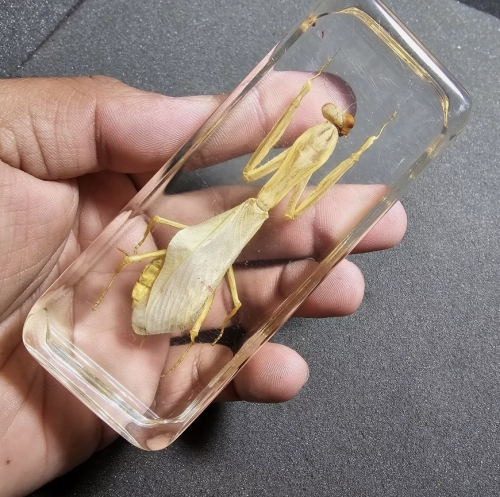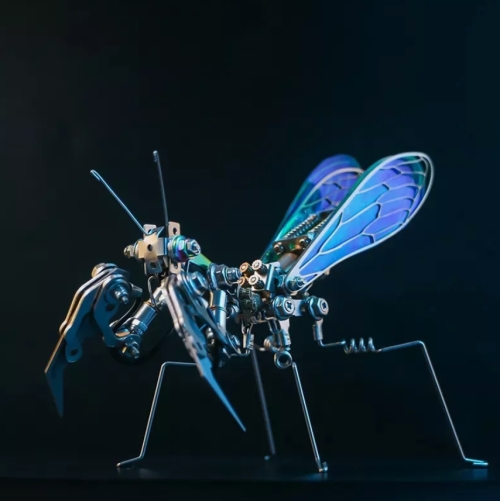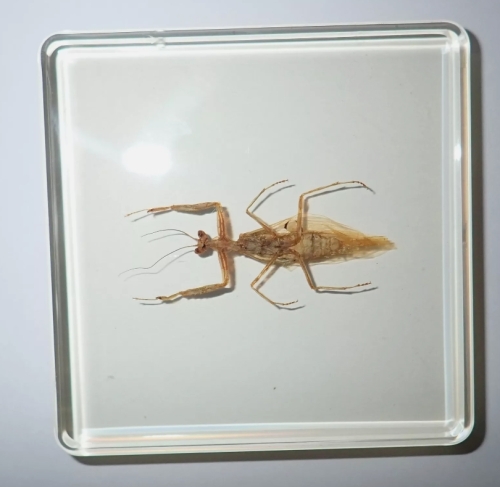The praying mantis is a fascinating insect known for its distinctive appearance and predatory behavior. Their specimens are of great importance in scientific research and display, especially in the fields of entomology and ecology. The mantis has a complex body structure with graceful and strong forelimbs, which makes them extremely flexible and efficient when hunting.
When preparing a mantis specimen, the first step is to select a healthy and intact individual. Usually, choosing individuals with bright colors and unique shapes is more likely to attract the audience's attention. After a mantis is caught, a series of treatments are usually performed to ensure the preservation and aesthetics of the specimen. First, the mantis needs to be placed in a fixative to maintain its shape and posture. Commonly used fixatives include alcohol and formalin, which can effectively prevent the specimen from rotting.
After processing, the specimen is dried to ensure it is protected from moisture. During the drying process, the technician will adjust the posture of the praying mantis from time to time to keep it in the ideal state. Once dried, the specimen will be secured in a transparent display case. In this way, the specimen can not only clearly display its unique form, but also protect it from external damage.
The scientific value of mantis specimens is not only reflected in its morphological characteristics, but also in its ecological and behavioral studies. By looking at different species of mantis specimens, researchers can learn about their role in the ecosystem and how they relate to their environment and other organisms. In addition, the life history and predation habits of mantises are also important contents of academic research.
In terms of education, the display of mantis specimens can stimulate interest in the insect world and enable students and the public to have a deeper understanding of the natural sciences.
















